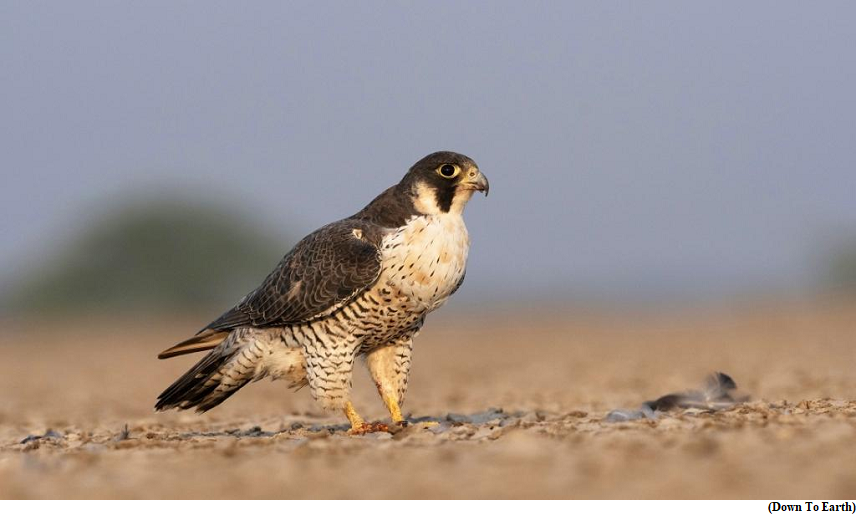Participation of Indian Air Force in Exercise Bright Star-23 (GS Paper 3, Defence)

Why in news?
- An Indian Air Force (IAF) contingent is participating in Exercise BRIGHT STAR-23.
- It is a biennial multilateral tri-service exercise scheduled to be held at Cairo (West) Air Base, Egypt from 27 August to 16 September 2023.
Details:
- This is for the first time that IAF is participating in Ex BRIGHT STAR-23 which will also see participation of contingents from the United States of America, Saudi Arabia, Greece and Qatar.
- The Indian Air Force contingent will consist of five MiG-29, two IL-78, two C-130 and two C-17 aircraft. Personnel from the IAF's Garud Special Forces, as well as those from the Numbers 28, 77, 78 and 81 Squadrons will be participating in the exercise.
- The IAF transport aircraft will also provide airlift to approximately 150 personnel from the Indian Army.
Significance:
- The objective of the exercise is to practice planning and execution of joint operations.
- Besides leading to the formation of bonding across borders, such interactions also provide a means to further strategic relations between participating nations.
India-Egypt relations:
- India and Egypt have had exceptional relationship and deep cooperation wherein the two jointly undertook development of aero-engine and aircraft in 1960s and training of Egyptian pilots was done by Indian counterparts.
- The relationship was further strengthened with the recent visits by Chief of Air Forces of the two countries and Indian Defence Minister and Prime Minister to Egypt.
- The two countries have also enhanced their joint training with regular exercises between their Armed Forces.
India’s iconic raptors are declining fast, warns new report
(GS Paper 3, Environment)
Why in news?
- India’s raptors (birds of prey) are declining fast and the reasons for the decline are poorly understood, according to the ‘State of India’s Birds 2023: Range, trends, and conservation status’ released recently.
- There is an immediate need for research to diagnose specific threats and measure their impact so that policies can be developed for raptors as a group.

Key Findings:
- The analysis found that all woodland species, and White-eyed Buzzard and Common Kestrel among generalists, continue to decline, but possibly at a lower rate than earlier.
- Raptors are in decline globally due to loss of habitat, pesticide accumulation as well as targeted killing. For instance, harriers have declined in their breeding range in Europe due to pesticide use. Harriers winter in India and some, like the Pallid Harrier have shown a 70 per cent decline.
- Some raptors in India are on the decline as they need large tracts of high-quality habitat to serve their dietary needs which the country no longer has.
- An example of this is the Tawny Eagle. It is becoming increasingly difficult to see today and is of High Conservation Concern like many other large raptors.
Vultures:
- The most concerning decline among raptors is that of vultures.
- The diclofenac ban may have slowed vulture declines in some places, but the analyses shows that countrywide, vultures continue to decline: Indian Vulture by over 8% every year, and Red-headed and White-rumped Vultures by over 5% and 4% respectively.
- Several Non-Steroidal Anti Inflammatory Drugs (NSAIDS), including diclofenac and aceclofenac, continue to be produced for human use and can thus be used for livestock as well.
- Besides drugs, vultures are now facing challenges in that carcasses are being buried. Moreover, feral dogs compete with the birds at carcass dumps. Carcasses poisoned to kill feral dogs often cause vulture deaths as collateral damage.
Positive trends:
- Generalist species like Shikra, Booted Eagle, Greater Spotted Eagle, and Brahminy Kite (which occupy a range of habitats, including human habitats) and woodland species appear to have suffered the least declines in the long term.
Way Forward:
- The report urged that investigation about the levels of toxic chemicals in the environment and in raptors’ prey species as well as how they accumulated in raptors’ tissues.
- Tackling this will require innovative and inter-disciplinary programmes involving a number of stakeholders.
- For vultures, it suggested “a combination of bans, education and alternatives” to stop the veterinary use of toxic NSAIDs.
Scientists find a bacteria that can 'eat' methane
(GS Paper 3, Science and Technology)
Why in news?
- A recent study has discovered a bacteria that “eats” methane, keeping the gas from entering the atmosphere in large amounts.
- Methane is a potent greenhouse gas that is released from various human activities, including energy production (natural gas and petroleum systems), business, agriculture, land usage, and waste management.

Methanotrophs:
- Using a class of bacteria called methanotrophs to naturally convert methane to carbon dioxide and biomass, a team of researchers from California University Long Beach has proposed a method for eliminating methane.
- All of the bacteria in this group “’eat’ methane, removing it from the air and converting part of it to cells as a source of sustainable protein.
- Methylotuvimicrobium buryatense 5GB1C is a strain of bacteria discovered by them that is capable of efficiently removing methane even in low concentrations. If adopted widely, the technique could aid in reducing global warming.
Why it matters?
- Using this bacteria extensively could save 240 million tonnes of methane from entering the atmosphere by 2050.
- This particular bacterial group typically flourishes in conditions with high methane concentrations (between 5,000 and 10,000 parts per million (ppm)).
- Methane concentrations in our atmosphere are typically significantly lower, at only 1.9 ppm. However, some places, like oil wells, landfills, and rice fields, produce higher amounts of roughly 500 ppm.
Challenges:
- There will be a need for thousands of well-functioning reactors if methane-eating bacteria are to be used on a large scale.
- Temperature regulation is challenging. Since bacterial development is inhibited by temperatures outside of the recommended range of 25 to 30 degrees Celsius, the researchers pointed out that both extremes of temperature can be harmful.
- To make sure the technology is economically viable and benefits the environment, it is necessary to analyse the environmental life cycle and techno-economics of the technology.
Sources of methane emission
- Due to livestock manure and gastroenteric releases, the agriculture industry is the main source of methane emissions in the atmosphere.
- Methane is a particularly problematic greenhouse gas because it has more than 85 times the warming potential of carbon dioxide over the first 20 years after it enters the atmosphere.
- In the last 15 years, atmospheric methane has risen rapidly, reaching record levels, and now contributes at least 30 per cent of all global warming.
- At CoP26 in 2021, a number of the top economies in the world decided to cooperate to lower methane emissions immediately. They do, however, keep going up.



![]()
